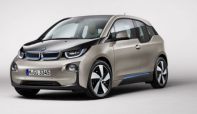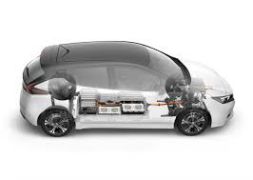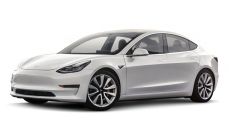
cartographie de rendement d'un GMP (moteur + onduleur) asynchrone

10/2012
This excellent performance of the powertrain partly explains the great ecological value of the Electric Vehicle from well to wheel.
This performance is to be compared to the 25% efficiency of a ICE (Internal Combustion Engine).
Power mapping of a high torque synchronous powertrain PM
Effciency mapping of a high torque synchronous powertrain PM PowerPhase 125


Powertrain : AC motor and inverter
Technical aspects.
The first electric motors that haved been used on electric vehicles were Direct Current motors (DC motor). This choice made sense 30 years ago because it was the easiest motor to drive with a chopper.
However, using this type of electric motor raises several issues:
- limited power density, due to the maximum rotation speed.
- Heat losses located in the rotor and thus difficult to evacuate.
- Brush wear.
However, due to the easy speed control, this has been the motor of the 90s EVs.
The second generation of engines for automotive use was induction (asynchronous) motors range. The increasing sophistication of in motors inverters allowed to use these engines very robust, compact and reliable (no maintenance). Nevertheless, in principle, the asynchronous motor by definition induces a magnetic slip (kind of "magnetic friction") in order to create torque. This slip involves heat losses in the rotor. Efficiency mapping below shows performance against which tops out at 82%, which falls rapidly to 75% over a wider operating range. Some cars use asynchronous motors currently : Tazzari Zero, Renault Twizy or Mia for example. The maximum efficiency is achieved by the Tesla Cars with 88%.
In spite of a more difficult control and potentially less reliability, the choice of the synchronous motor seems to be the best for EVs applications. Historically confined as generators, synchronous motor provides the best performance in terms of efficiency.
Two families of synchronous motors are in competition:
- Wound rotor. Coils are used to create the rotor magnetic field. this field can be modulated electronically with a chopper, allowing an easy drive at high speed (field weakening). It requires an electrical contact with the rotor (with a rotating part).
- Permanent magnet rotor: no power supply is required for the rotor. So there is gain maintenance, offset by a potential risk of demagnetization field weakening phase. In addition, these engines generally use rare earth magnets, raising a lot a question linked with the chain supply.
The Electric Vehicle market (or PHEV) is shared mostly between these all these technologies :
- Induction motor : Tesla, Renault Twizy, heuliez Mia...
- Ion Peugeot, Toyota Prius, Motor Synchronous permanent magnet. Disadvantage: China has a virtual monopoly of rare earths used in this application.
- Renault-Nissan and Bolloré use a wound rotor synchronous motor, larger and heavier, and require additional electronics (chopper) ... but not of rare earths.
Evolution is to provide high torque motors to reduce the stresses of the speed reducer (speed range limited to 0-6500t/mn against 0-10000t/mn usually). On mapping below, we see that the efficiency remains above 90% over a wide operating range. Reducing a rotational speed which is contained at 6,000 rpm is within the usual automotive specifications, with limited losses in the high speed range .



Electric and hybrid vehicules technology





Réalisations